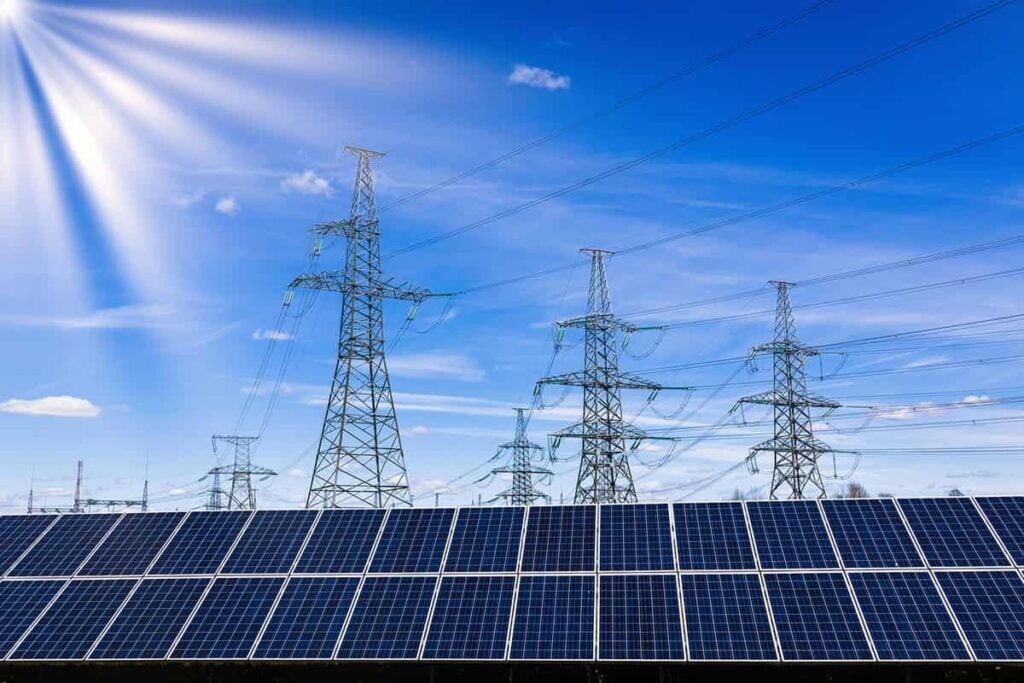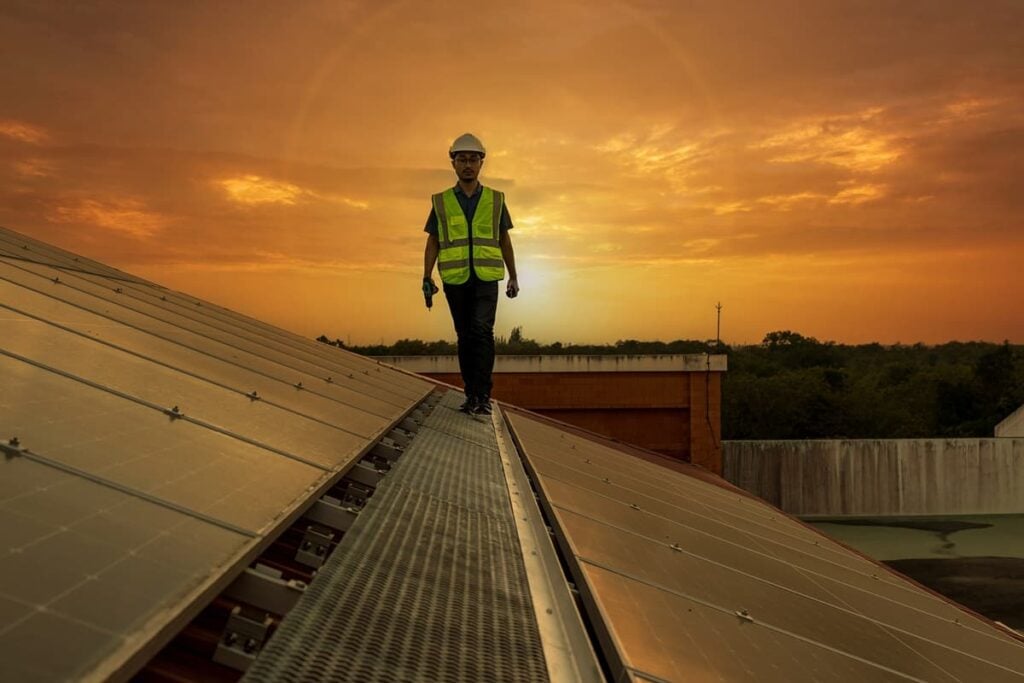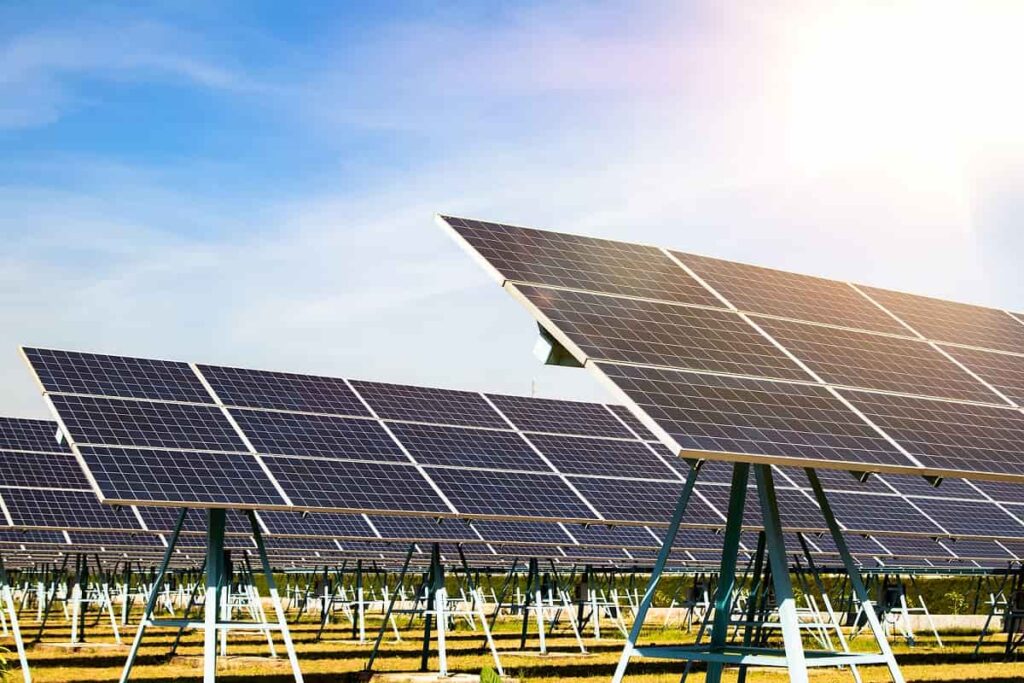Floating Solar Farms Are the New Wave of Renewable Energy
Table of contents

We recently touched on the topic of climate change in an article about how a startup called Climeworks is developing a technology to capture heat-trapping carbon dioxide. The effort is noble, if not entirely lucrative at present. And, let’s face it, the only way to clean up the planet at scale is to make it profitable. The strategy also needs to consider zero-carbon technologies that are practical and proven. Solar energy certainly qualifies under that criteria. The U.S. solar industry generated more than $150 billion in economic activity in 2016, with revenues jumping from $42 million to $210 million over a 10-year period between 2007 and 2017, PBS reported. The article also noted that about twice as many people work in solar-related jobs than in the coal mining industry. Maybe that’s why it seems that so many companies, including Google, are floating the idea of floating solar farms.
What is a Floating Solar Farm?
Unless you live near a mosquito-infested bayou, chances are that real estate prices have been climbing since the Big Fat Recession of 2008. That’s doubly (or more) true if you live in one of the most expensive cities of the world where residents have to choose between the cost of buying avocado toast for weekly brunch dates and paying rent on an apartment too small for IKEA furniture. In other words, there’s less and less real estate available to build traditional solar farms on terra firma. Floating solar farms are similar to land-based solar power systems except that they are deployed on pontoon-type floats, with an anchoring and mooring system holding the platform in place. In most cases, they are built on man-made reservoirs. There are variations, of course, but generally, they might look something like this:

Floating solar farms have some distinct advantages, such as improved energy yield thanks to the cooling effects of water and the decreased presence of dust. (The cooling effects of the sea is one reason why Microsoft is testing the concept of submerged data centers.) Floating solar panels also provide shade for water sources, helping reduce evaporation while preventing algae blooms in freshwater.
Largest Floating Solar Farm in the World
It shouldn’t be surprising to learn that the first floating photovoltaic system was built in population-dense Japan in 2007, according to a report by the World Bank. The United States was an early adopter, with the first commercial installation atop a reservoir near a California winery in 2008. (Apparently, the vintner believed the land could be better used to grow more grapes for overpriced Merlot.) Of course, it didn’t take long for China to get into the act, finding yet another way to kick America’s ass in tech to become the leader in the floating solar PV industry.
China is now home to the largest floating solar farms in the world, concentrated in Anhui Province atop flooded former coal mines. The biggest floating solar farm can produce 150 megawatts (MW). Estimates vary widely on how many homes one megawatt can power based on a variety of factors such as geography and weather, but the California Energy Commission pegs the number at 750 homes. Our advanced math skills tell us that a 150-megawatt solar power plant can support about 112,500 residences. Of course, China is not California, so either double or half the number, depending on your personal biases.

The company behind the floating solar photovoltaics projects is Sungrow Power Supply, a 22-year-old Chinese company that specializes in alternative energy hardware and services. Sungrow (CH:300274) trades on the Shenzhen stock exchange and claims to be the largest solar photovoltaic inverter manufacturer in China, with a North American subsidiary in Ontario. The company recently pushed into Japan, which first created the market and is reportedly home to the most floating solar power plants, though most aren’t much bigger than a koi pond. Electronics and ceramics manufacturer Kyocera (JP:6971) is considered the leader in floating solar farm systems in Japan.
Market Potential of Floating Solar Farms
There are more than 400,000 square kilometers of man-made reservoirs in the world, which the World Bank report says could support at least 400 gigawatts of sun-powered energy, doubling the current worldwide photovoltaics capacity. Currently, only about 1.1 gigawatts worth of floating solar panels have been installed around the planet:

That’s roughly the same amount of capacity that ground-based systems had at the turn of the 21st century. The World Bank estimates that “floating solar could advance at least as rapidly, profiting as it does from all the decreases in costs attained by land-based PV deployment.” The U.S. National Renewable Energy Laboratory estimates that installing floating solar photovoltaics on the more than 24,000 man-made U.S. reservoirs could eventually generate about 10% of the country’s annual electricity production.
And while we put as much faith in market forecast reports as we do in astrology, one such prognosticator said the floating solar farm market was already worth more than $800 million in 2016, with expectations it will hit $2 billion by 2025. That’s only if Aquarius is Rising. Whatever that means.
Hybrid Floating Solar Farm
What’s better than one form of sustainable green energy? Two. Engineers are already working at making grid-connected hybrid systems that combine floating solar panels with hydropower plants. The obvious advantage is that the hydropower systems are already tapped into the grid, providing some of the needed infrastructure to make it all work. One small system was built in Portugal a few years ago.
Such hydro hybrid systems already exist with land-based photovoltaic power plants. The biggest, of course, is in China. The solar array does the heavy lifting during peak daylight hours, with the hydro generators doing more of the work at other times.
Private Companies Building Floating Solar Farms


An Austrian company called Swimsol specializes in offshore floating solar farms, but in relatively shallow and protected lagoons. The company has easily cornered the market in the Maldives with its SolarSea solution, with plans to expand in Southeast Asia. The floating solar platforms can survive waves, currents, tides, extreme UV, humidity, and is corrosion-proof. Swimsol says its floating solar farms provide up to 10% higher output than rooftop systems in the same geographical region, thanks to the cooling effect of water and additional light reflections from the water surface. And it doesn’t cost a penny to install; Swimsol does all the work, selling power back to its customers.


Texas-based Suniboat is our U.S. entrant on this list. It provides a turnkey service, from developing the design of the floating solar farm to operations and maintenance. Like Swimsol, it offers clients the option to defer all installation costs and buy the power directly from Suniboat. The company has completed a test installation in India, which could obviously prove to be a huge market, with more than 5,000 dams covering nearly 14,000 square kilometers.
Conclusion
Floating solar farms appear to be the new wave in renewable energy systems. The cool thing is that while we’re just at the starting line, the technology itself is proven and still dropping in cost. This isn’t gimmicky or financially risky, like cars with solar panels, but a viable solution that will be deployed rapidly in the next few years.
Sign up to our newsletter to get more of our great research delivered straight to your inbox!
Nanalyze Weekly includes useful insights written by our team of underpaid MBAs, research on new disruptive technology stocks flying under the radar, and summaries of our recent research. Always 100% free.














